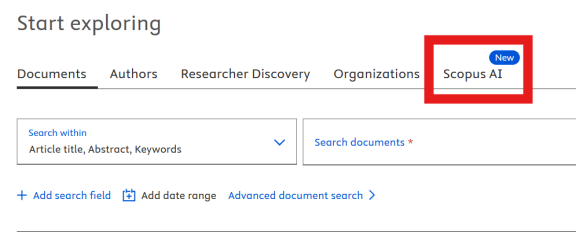Definitions
Artificial Intelligence (AI): Technology that enables computers and machines to simulate human intelligence and problem-solving capabilities
Machine Learning: Algorithms that use neural networks with an input layer, one or two 'hidden' layers, and an output layer
Deep Learning: A subdiscipline of Machine learning, that involves more 'hidden' layers, that allow for unsupervised learning (i.e., without human intervention)
Generative Artificial Intelligence (GenAI): AI that utilizes deep learning and training data to generate original, statistically probable outputs based on prompts
Chatbot: A computer program that simulates human conversation with a user, chatbots do not always use AI, but applications like ChatGPT use natural language processing (NLP) to interpret complex queries and make interactions more conversational (IBM, n.d.)
Applications of AI
TED-Ed: How will AI change the world? | TED Talk
AI has been a part of our daily lives for years – for instance, the tools recommending TV shows or movies to watch based on your previous Netflix activity, or the suggested words that pop up as you type an email or word document are examples of AI. These AI tools learn how to complete a specific task based on training data and can very successfully operate within the constraints of the task it has learned. Generative AI, or GenAI is different, because it can create new information or outputs based on training data. Rather than just recommending you content from its existing library, GenAI could write you a script or create an image to entertain you. Much of the current discussion on AI, and this research guide, is focused on GenAI.
Ethical Considerations for AI Use
Bias:
The training data used to help AI 'learn' can, and often does, contain biases about women, racialized people, and other marginalized groups. Therefore it is critical to remember that AI is capable of perpetuating harmful biases or stereotypes
- 13 Principles for Using AI Responsibly (hbr.org)
- 3 Types of Bias in AI
- Research shows AI is often biased. Here's how to make algorithms work for all of us | World Economic Forum (weforum.org)
Privacy:
The inputs you feed into AI applications may be used for training data, or other purposes, ensure you read the terms of service, and are careful about inputting sensitive information. Companies may also be tracking your activity across different platforms, or your physical location, if you haven't explicitly opted out.
- Privacy in an AI Era: How Do We Protect Our Personal Information? (stanford.edu)
- Generative Artificial Intelligence and Data Privacy: A Primer
- 5.-Resolution-on-Generative-AI-Systems-101023.pdf
- Principles for responsible, trustworthy and privacy-protective generative AI technologies - Office of the Privacy Commissioner of Canada
- The Impact of Artificial Intelligence on Data Protection and Privacy Brief
Copyright:
The intersection of copyright and Generative AI (GenAI) is an evolving field. Copyright considerations may arise when inputting (training) materials for GenAI, creating prompts, or sharing the output. Submitting copyrighted materials as prompts into GenAI applications may infringe upon the rights of the copyright holder or violate the terms of use. Additionally, the output from GenAI may lack originality, and combine both human and non-human creativity. Copyright laws in Canada are not clear on whether such works can be protected. The United States Intellectual Property Office does not consider works produced by GenAI protectable. For support in considering the copyright implications of GenAI, contact Joshua Dickison, the UNB Libraries Copyright Officer, at jjd@unb.ca or copyright@unb.ca
IBM (n.d.). What is AI? https://www.ibm.com/topics/artificial-intelligence


